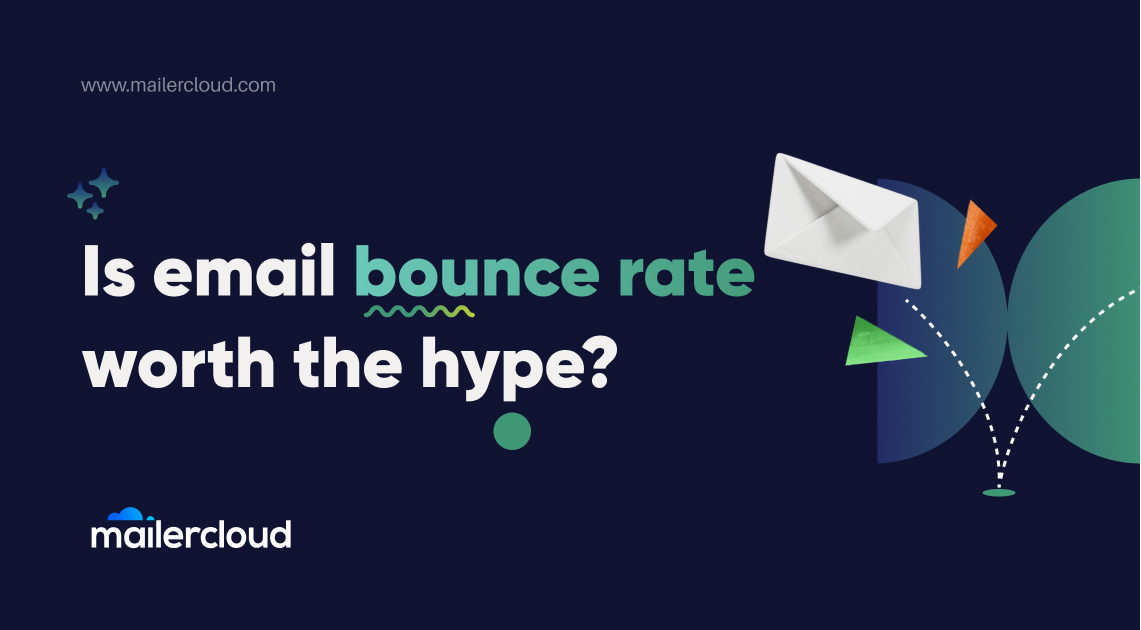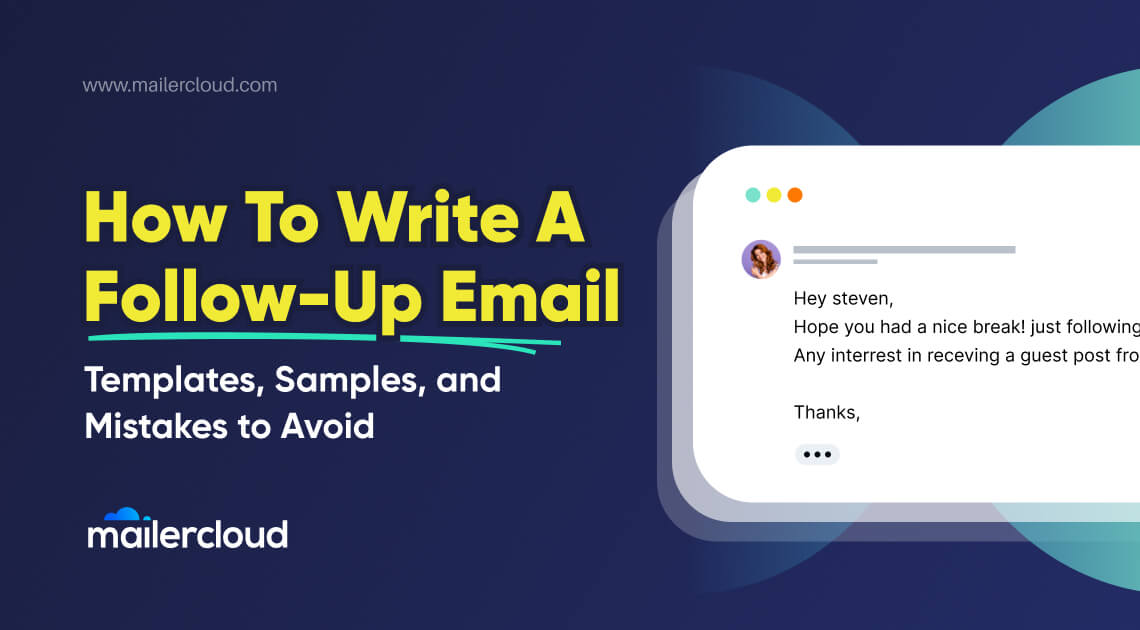Everyone actively present in the digital and email marketing landscape is well aware of the enormous potential that email marketing has in terms of return on investment and outreach.
You pick an email marketing tool, give it your all when it comes to designing emails and email campaigns, plan everything out, and then push the send button to send the emails. That’s fantastic! However, you learn that some of your emails bounced back, indicating that they did not reach their intended recipient. Imagine your frustration after learning this.
Emails bounced after all the effort not just ruins your mind, but also affects the overall performance of the email campaigns. An email bounce indicates that your subscriber or a user did not obtain the information you intended them to see as well as they wanted.
Table of Contents
Email Bounce Rate – What Exactly It Is and Why You Should be Concerned About It?
The percentage of emails that are “bounced” back to you as undelivered emails is indicated by bounce rates. Viz, the email cannot be delivered to the intended recipient’s inbox – even to their spam – and is diverted back to the sender server with a bounced status signal.
Email bounce rate metrics and stats work in a unique way. You don’t want your bounce rates to be too high, unlike the email open and click-through rates – the lower, the better!
Acceptable email bounce rate: 2%. If you witness anything beyond this, then the situation is alarming. It deserves your keen attention and you probably have to figure out ways to lower it down.
While this is an approximate bounce rate, it’s imperative to note that each industry’s benchmark bounce rate is different and variable. This is due to the fact that each business caters to a specific demographic, and each demographic has its own set of behavioural tendencies.
What does an email bounce rate mean to you as an email marketer?
An obvious fact is that an email bounced or an undeliverable email is a missed conversion prospect down the road. The bounce rate is an important sign depicting the quality of your contact list.
All email campaigns are certain to have a few bounces – it’s natural and anticipated. However, preventing a big number of bounces is critical to maintaining your sender reputation. This also ensures compliance with spam regulations and keeping at bay bounce suspensions and penalties.
Bounced emails can harm:
- Email sender reputation, and;
- Capability to get your emails straight into the recipient’s inbox.
Consider this scenario: a member happily gives you their email address in exchange for useful information, but they never receive it, because the email has bounced – people on both ends lose.
Even for recipients who proactively interact with your emails, the lower your email sender reputation is, the more likely your emails will be sent to their spam box. When this actually occurs, you’ll witness a drop in engagement rates, reduced open rates, dwindling click through rates, and fewer sales.
Bounced emails are regrettably a typical aspect of email marketing. It occurs all the time because people change their email addresses and their accounts sit idle for years before being deactivated.
Indeed, a high email bounce rate might negatively impact your overall email deliverability, which is why it’s critical not to disregard it.
Calculating Email Bounce Rate
To compute the email bounce rate of your email campaigns, divide the number of emails bounced by the total number of emails sent. Next, multiply the figure obtained by 100 to generate the percentage value.
Reasons behind Bouncing Back of Emails
Bounced emails can occur for a variety of reasons, which might be permanent or temporary, solvable or irreparable. Whatever the cause, if emails bounce, a notification is delivered to the sender from the recipient’s mail server to assist in the diagnosis of the problem.
One of the most typical reasons for email bounce is that your recipient’s email account has been deleted since it is no longer active or has been inactive for an extended period of time. This brings in the importance of maintaining a clean mailing list; otherwise your bounce rate will rise, resulting in the deterioration of your email reputation. A terrible email reputation will position you on the spam filter’s radar, springing a loop of non-engagement.
Emails can bounce back if the email server is down, which has been a common reason with business or organisation email accounts. If the recipient adds you to a “blocked” list, your email may also bounce.
Since there are many reasons behind bounced emails, they are categorised into groups. Bounces are typically classified as either hard or soft, depending on the severity of the issue.
Hard Bounce Vs Soft Bounce Rate
What is a hard bounce?
A hard bounce email signifies a permanent delivery failure. This mainly occurs because of erroneous email addresses, outdated domains, inactive email addresses or recipient email server has prohibited email delivery.
Key Point: There are occasional chances of valid email addresses resulting in a hard bounce email.
What is a soft bounce?
Soft bounces are temporary delivery failures. The receiving server may be experiencing a momentary glitch. Soft bounces can happen for a variety of reasons, but you can reduce the likelihood of their occurrence by carefully monitoring your contact list and ensuring your data is sourced with opt-in authorization. Some common reasons of soft bounced emails are:
- Inbox is well beyond its normal quota
- Incorrect or improper configuration of the recipient’s inbox
- Offline email server or the server is down
- Invalid domain names
Soft bounces are also a by-product of email content that may:
- Not comply with the recipient servers’ anti-virus, anti-spam, authentication, and other sender policies.
- Not relay between the emails servers.
Best Practises to Improve (Reduce) Email Bounce Rates
First of all, maintain a clean and updated email list. Create segments of your target audience and regularly refine them to get rid of inactive and old email contacts that are the main reason behind bouncing of emails.
It’s also a smart strategy to keep track of the contacts’ open and click rates. It’s a wise decision to block a contact from receiving emails if they haven’t opened or interacted with them in a long time.
Authenticate & Verify your Sender Domain
Negative security notifications are not sent to recipients when you have proper domain authentication. This contributes to having a favourable impact on sender repute and email deliverability rates. All of these results in bringing down the email bounce rates.
Adopt a Double Opt-in and Permission-based Process
Cut down the likelihood of fake signups by using the double opt-in method. You’ll know the email address is from a valid, verified inbox if you use double opt-in instead of single opt-in. Double opt-in strategy is a boon for those email senders who have had poor open rates or abuse reports in the past.
Maintain a Healthy Email List
Email verification ensures that your mailing list is in good shape filled with only valid email addresses. You’ll avoid the spam folder, save money on email campaigns, and maintain good deliverability via this approach.
Keep up a Consistent Email Sending Frequency
An impactful and fruitful email marketing campaign requires consistent engagement with your subscribers.
Popping up in the inboxes of your subscribers on a regular basis slowly and steadily makes the subscribers look forward to your emails. Additionally, such efforts shall help in keeping an active list of people who actually open and respond to your emails, thereby, making it easy to purge your contact list by removing hard bounced emails when necessary.
Avoid Using Free Sender Domains
Create and send emails from your own domain using Mailercloud’s custom domain feature. A custom sender domain establishes your credibility as a legitimate email sender, making your emails less likely to land up in the spam box.
Time to Make a Paradigm Shift
It can be difficult to focus very little on your emails bounced, notably if it has been one of your most significant metrics previously. Reviewing your email sending policy is a smart approach to make this modification.
Do you track, monitor, analyse the results of email campaigns diligently and adjust the campaigns accordingly?
Have you double-checked everything to avoid being flagged as spam?
Is the email content and file size legitimate and appropriate?
Do you follow A/B testing for your emails?
These are only a few questions to get the stepping stone right, but they should help you immediately fix some of your bounce rate issues. Consistent email campaigns and improved deliverability will quickly alleviate your bounce rate issue, and you’ll spend less time fretting over an analytics screen.
































